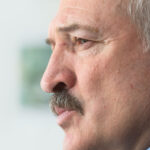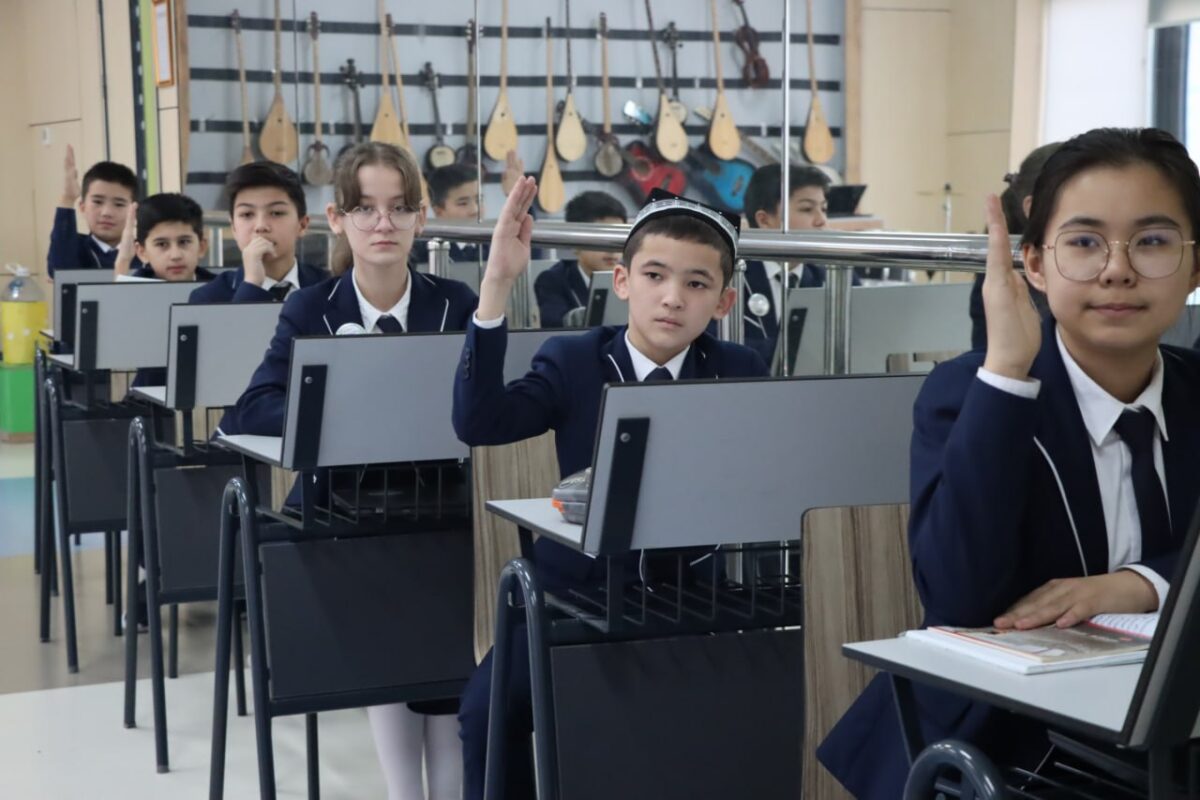It is early morning in Tashkent, and a class of uniformed teenagers is about to begin a new day at the Presidential School, one of several ambitious new academies founded in 2019.
The students, each carefully selected on the basis of a rigorous exam, are greeted by teachers trained to emphasise critical thinking over rote memorisation—a stark shift from the Soviet-era practices that once dominated Uzbekistan’s classrooms.
Here, interactive lessons in coding and robotics displace endless recitations of facts. Instructors sprinkle their English-medium lessons with group discussions, encouraging students to pose questions and challenge assumptions.
This scene—unthinkable a decade ago—is part of a broader transformation shaking up education systems across Central Asia.
Legacies of the past
For much of the post-Soviet period, the education models in Kazakhstan, Kyrgyzstan, Tajikistan, Turkmenistan, and Uzbekistan remained heavily indebted to the teaching styles and curricula inherited from Moscow.
Under that system, teachers lectured, pupils listened, and discipline was strict. Pupils who displayed too much curiosity were often told to stick to the textbooks. While the Soviet model successfully boosted literacy rates and laid a foundation of basic schooling for millions, critics say it did not keep pace with modern workplace demands.
Today’s employers require graduates adept at problem-solving, teamwork, and innovation—skills not fostered by rote learning.
Soviet-influenced curricula also excelled at producing specialists in subjects that served centrally planned economies—heavy industry, engineering, agronomy—often at the cost of the humanities and creative pursuits.
In a region now striving to diversify beyond commodity exports, the old approach appears increasingly out of date. Younger generations seek training in business, IT, and global languages, not simply memorisation of physics formulas.
Governments, too, have begun acknowledging that if they do not overhaul their education systems, they risk lagging behind more agile rivals in Southeast Asia or the Middle East.
Classrooms in flux
In an effort to turn the tide, local authorities in Central Asia are making bold moves to stimulate education reform.
Uzbekistan’s Presidential Schools, scattered across major cities, have embraced student-centred teaching methods, including interdisciplinary projects and debate competitions.
Meanwhile, Kazakhstan introduced the Nazarbayev Intellectual Schools, which combine advanced STEM curricula with language immersion in Kazakh, Russian, and English.
These experiments go beyond cosmetic changes. Administrators are recruiting teachers from abroad, forging links with universities in Britain or the United States, and shaking up centuries-old pedagogical norms by offering frequent professional-development sessions for local educators.
Tech-savvy instruction features prominently in this new wave of reforms. Ministries of education are allocating funds to equip classrooms with computers, interactive boards, and high-speed internet. In Almaty, for instance, entire pilot districts are switching to digital textbooks, enabling students to access online resources that supplement classwork.
Private companies, too, are joining the fray. Coding academies, robotics clubs, and hackathons have become more common, tapping into a latent enthusiasm for science and technology. Kyrgyzstan’s TUMAR Tech Challenge, named after a traditional amulet, offers a taste of Silicon Valley to bright pupils who might otherwise lack exposure to cutting-edge tools.
A further strand of the region’s educational innovation is linguistic diversification. Kazakh, Uzbek, and other local languages retain pride of place, but English is increasingly seen as a passport to global opportunities.
Language immersion programmes, particularly in urban centres, are booming. Even Russian—a lingua franca in the post-Soviet realm—now competes with Mandarin in some Kyrgyz or Tajik schools, underscoring China’s economic sway.
The net result is a multi-lingual generation with greater access to international information flows, albeit at the cost of potential cultural friction over which languages to prioritise.
Looking outward
Central Asian governments are also ramping up international collaboration. Uzbekistan and Kazakhstan have each launched scholarship schemes encouraging talented students to study abroad, provided they return home to bolster local development.
Kazakhstan’s Bolashak (meaning “future”) scholarship, founded in 1993, famously funded the overseas education of thousands of promising students, many of whom now occupy influential roles in government and business.
Uzbekistan has instituted similar programmes in recent years, seeking to harness the talents of a young, ambitious population.
Foreign universities, meanwhile, are increasingly planting roots in the region. British, American, and Turkish higher-education institutions have opened satellite campuses or joint-degree programmes to capture the swelling demand for globally recognised qualifications.
Tashkent boasts a campus of Westminster International University, while Almaty hosts branches of Britain’s De Montfort University and other foreign schools. These initiatives aim not only to raise academic standards but to encourage cross-border research collaborations.
Shared projects on everything from water management to agriculture technology draw researchers from diverse backgrounds, often with the support of international donors like the World Bank or the Asian Development Bank.
Collaboration among Central Asian nations themselves remains more modest. Political tensions, border disputes, and bureaucratic hurdles can hamper attempts to coordinate education strategies. Still, regional summits occasionally produce pledges to share best practices or harmonise qualifications.
The Collective Security Treaty Organisation or the Shanghai Cooperation Organisation, though primarily focused on security, increasingly discuss youth and education cooperation, reflecting a recognition that deeper social ties can underpin peace and prosperity.
Levelling the field
One of the greatest challenges for policymakers is ensuring that these reforms benefit all, not just urban elites. In remote areas of Tajikistan, the legacy of underinvestment in schools is glaring.
Classrooms can be dilapidated, textbooks outdated, and teachers often poorly paid or absent. Internet access, a prerequisite for many innovations, is patchy beyond major cities. While the shift toward interactive, digital instruction excites wealthier parents, those in mountain villages may wonder if they will ever see these teaching methods.
Yet the potential social impact of higher-quality schooling is vast. Experts argue that education reforms can do more than cultivate the next generation of IT entrepreneurs.
They can reduce unemployment, keep rural populations anchored at home, and curb the region’s reliance on labour migration to Russia or Turkey.
Equipping young people with the skills to start businesses—ranging from artisanal craft exports to online consultancy—could transform the economic landscape of a region often overshadowed by commodity markets and big-power politics.
Indeed, for those with drive, the new educational opportunities are a springboard to upward mobility. Girls, in particular, stand to gain. Conservative social norms in parts of the Ferghana Valley or western Turkmenistan have traditionally limited girls’ schooling beyond primary level.
Promoting science camps, coding clubs, and scholarships specifically for female students can unlock vast pools of untapped talent. These steps, if implemented effectively, promise to shift cultural expectations and produce more women in leadership positions—whether in tech firms, universities, or government ministries.
The road ahead
Reforming education in Central Asia, though promising, is no quick fix. Classroom renovations are easier to announce than to complete, and rolling out advanced curricula requires far more teacher training and infrastructural upgrades.
Corruption and nepotism linger in some corners of the education system, and political instability—exemplified by leadership transitions—can stall or reverse progress. Even so, few dispute that Central Asia’s future depends on nurturing a cohort of creative, adaptable citizens ready to compete on the global stage.
From Tashkent’s pioneering academies to Kyrgyzstan’s nascent tech hubs and Kazakhstan’s internationally connected universities, evidence of change is mounting.
More parents are rejecting the old rote-driven model, and local employers are clamouring for graduates who can innovate rather than memorise. If governments can keep expanding these opportunities beyond the major cities, Central Asia may begin to shed its Soviet legacy and forge a vibrant, knowledge-driven identity.
The sight of uniformed teenagers tinkering with robots before discussing Shakespeare in English is, after all, more than mere symbolism—this new generation embodies the region’s best hope for broad-based, sustainable development.
Photo: Uzbekistan Presidential Schools official Facebook page.







